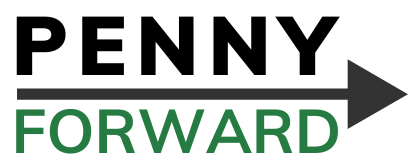This post was originally published to the Social Security Matters blog on December 19, 2024. It was written by Jody Ellis, Director, ABLE National Resource Center, Marlene Ulisky, Social Security Subject Matter Expert, ABLE National Resource Center and Laurie Schaller, Subject Matter Expert, ABLE National Resource Center
On December 19, 2024, we mark the tenth anniversary of the Stephen Beck, Jr. Achieving a Better Life Experience (ABLE) Act, which allows eligible people with disabilities to open a savings and investment account. ABLE investment growth is not taxable and is not countable income if the funds are used to pay for qualified disability expenses (QDEs).
The ABLE Act gives people with disabilities the opportunity to save and invest while maintaining eligibility for public benefits like Supplemental Security Income (SSI) and Medicaid, now or in the future. Historically, resource limits often made saving difficult for people living with a disability. ABLE accounts are one way to help bridge this gap, allowing savings for those extra costs without jeopardizing critical benefits.
Since the first ABLE program opened in 2016, ABLE account holders have saved over $2 billion in assets. As of 2024, more than 187,000 people with disabilities have opened an ABLE account, with an average of over $11,600 saved and invested in each account. ABLE participants can select from a range of options with different saving/investment limits to help them save for their personal needs. Despite this, only about three percent of ABLE-eligible individuals have opened an account. Research shows that a lack of knowledge about ABLE’s existence is the biggest barrier to participation.
ABLE accounts allow SSI recipients to hold significantly more resources (up to $100,000), which are not subject to the SSI asset limit.
According to the Social Security Administration (SSA), exceeding the resource limit is one of the main causes of SSI overpayments. If more SSI recipients used ABLE accounts, many could avoid overpayments caused when their resources exceed $2,000 (and fewer recipients would be suspended, terminated, and need to be reinstated after spending down their excess resources).
Contributions to ABLE accounts are subject to annual and cumulative limits and are treated as gifts for federal gift tax purposes. Contributions deposited into an ABLE account do not replace benefits provided through private insurances, the Medicaid program, the SSI program, the Social Security Disability Insurance (SSDI) program, the beneficiary’s employment, and other sources. Instead, and to the advantage of ABLE account participants, the funds supplement these benefits. ABLE accounts may offer savings, checking, and investment options. Funds in an ABLE account can be used to purchase qualified disability expenses, defined broadly by the IRS as something that helps the person stay healthy, independent, and have a good quality of life. Some examples include education, housing, transportation, training, funeral/burial expenses, basic living expenses, food, property taxes, rent/mortgage, and utilities. This provides flexibility for the usage of the ABLE funds, leaving it open to items or services that relate to the unique needs of each account owner.
At this time, to be eligible for an ABLE account, a person’s disability must have begun before the age of 26, although an ABLE account can be opened at any age. On January 1, 2026, the ABLE Age Adjustment Act will expand eligibility to include people who have a disability that began before age 46. This expansion will allow another six million people to be eligible for an ABLE account.
Some people may need assistance to open and manage their account and to reach their financial goals. The IRS provides a prioritized list of who may open an account on behalf of an eligible individual, starting with someone they select, followed by legal representatives, family members, and representative payees. An account opened by a representative payee appointed by the SSA must follow all Social Security account rules and regulations.
ABLE accounts promote independence and financial stability, enabling people with disabilities to save and plan for essential needs while accessing and retaining critical benefits. To learn more, refer to Social Security’s Red Book – A Guide To Work Incentives and Employment Supports for People Who Have a Disability and Spotlight on Achieving a Better Life Experience Accounts (ABLE).
This blog post is informational only and does not constitute financial advice or an endorsement of ABLE products or ABLE organizations by the Social Security Administration. There may be other financial options that could be a better fit for some individuals. You must use your best judgement to determine which option is best for your situation.

Leave a Reply